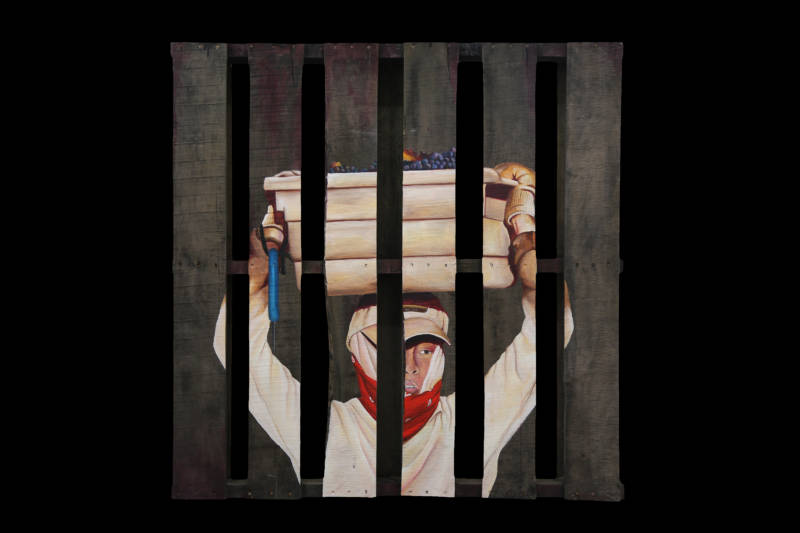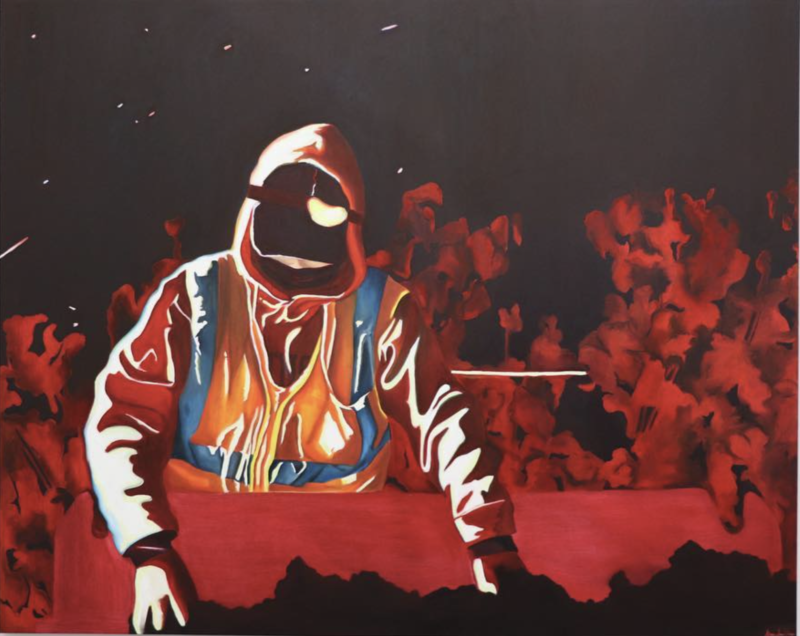Mexican artist Arleene Correa Valencia thinks a lot about where she can go and where she can’t go, and about whose bodies are welcome in which spaces—especially in the realm of fine art.
“My life has always been this in-between,” she says. “I try to be very cautious of my place and what it means to be an artist who’s investigating these very specific issues.” Correa Valencia was born in Arteaga, Michoacán and came with her family to the United States when she was three years old.

In a series of portraits of field workers, Correa Valencia establishes a relationship before she broaches the topic of painting her subjects. She explains how she wants to make their often invisible labor tangible to art audiences by physically inserting brown faces into white-walled spaces. These portraits, she says, reflect the resilience and extreme work ethic of her Latino community.
After fires swept through the region in 2017, ash and smoke in the air made any outdoor activity unsafe, and yet vineyard workers continued to pick grapes—they couldn’t afford to stop. Napa, Correa Valencia says, “is so rich and full of wealth, but also is home to some of the most cruel conditions for human beings.”

Her openness about her own undocumented status is part of her desire to make hidden truths apparent through her art. “There’s definitely a lot of shame that comes with being undocumented, especially when you’re younger,” she remembers. Correa Valencia qualified for DACA and in 2018 completed a BFA in painting from California College of the Arts, where she has continued graduate studies.

